For a few years, I found myself moving frequently. I lived in five different homes in as many years.
During that time, I had to put my gardening passion into houseplants and a few choice container plants.
Whether I was living in a cosmopolitan high-rise or on a sprawling farm with 20 wooded acres, I always had roses with me.

We link to vendors to help you find relevant products. If you buy from one of our links, we may earn a commission.
On my tiny sky-high patio, bordering my long gravel driveway, and standing as a greeting on my porch, container roses went with me wherever I moved.
It’s not just that I love roses, though I do. But these plants can adapt marvelously well to life in a container.
Then there are those people who don’t have the right drainage or the perfect soil for roses. No problem, that’s what containers are for.
To help you grow these flowering wonders in pots, here’s what we’re going to chat about:
What You’ll Learn
Growing in a container can be both a blessing and a curse for roses.
It can mean the plant has better air circulation than those in a garden bed, but it can also mean the plant might experience more drought and freeze damage.
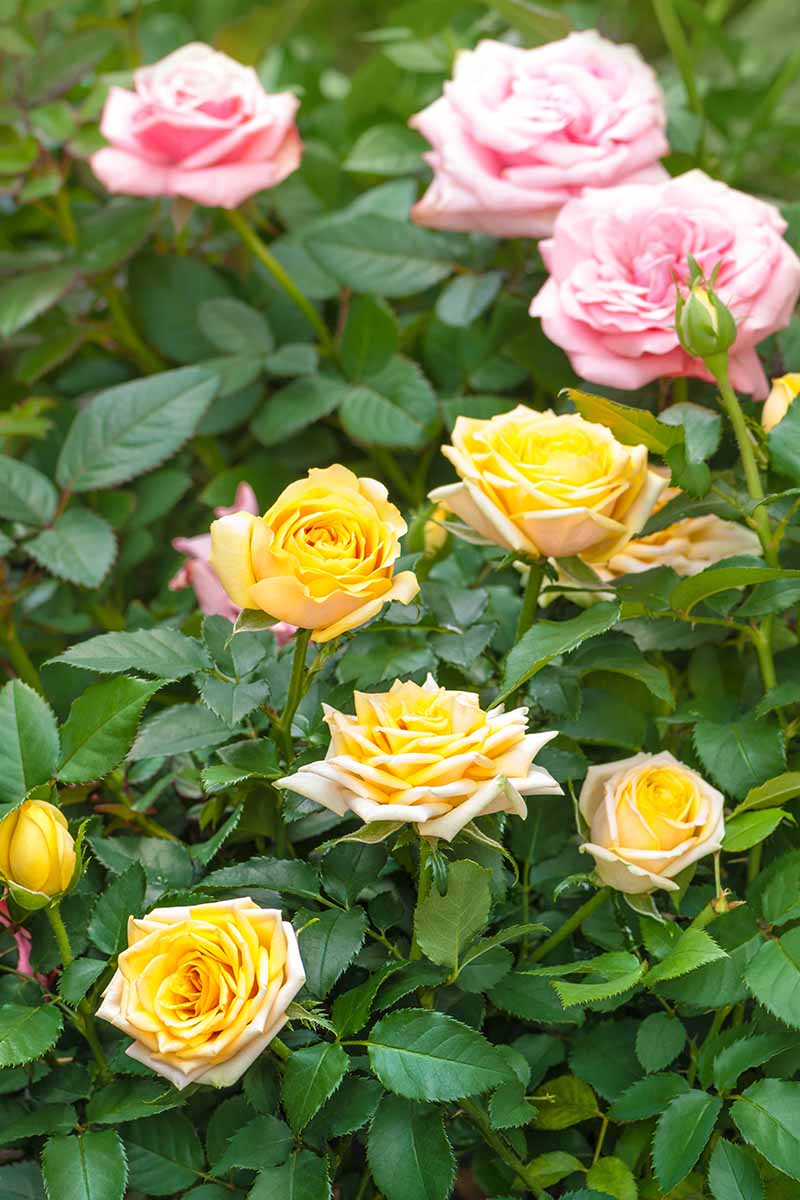
You also need to be mindful of where you situate the planter. Or at least be careful to choose the right cultivar.
Roses are usually covered in prickles (or aculeate, in the vocabulary of botanists). You don’t want to place the plant somewhere that you’ll be constantly walking by and getting snagged.
Choosing a Container
Make life easier on yourself and buy a container that is large enough for your plant.
A miniature will probably be fine in a 12-inch container, but most full-sized roses are going to need something 20 inches in diameter, though 24 inches is even better.
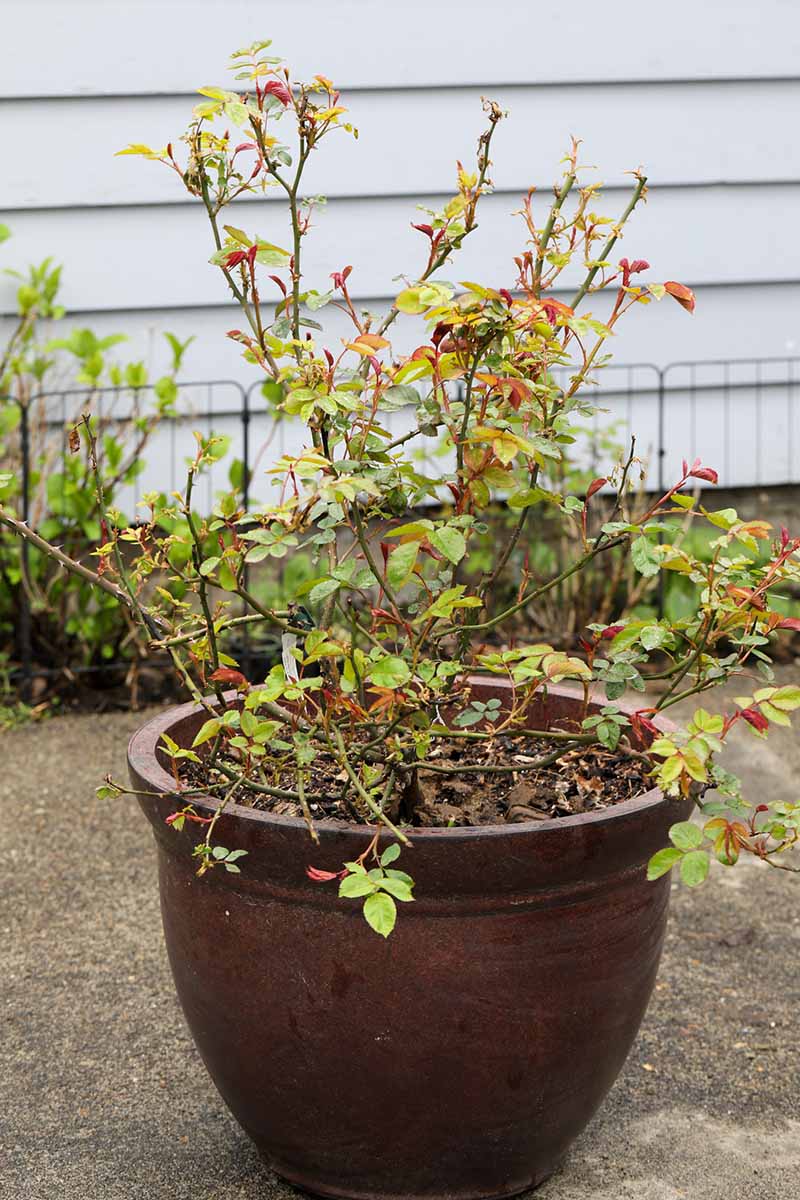
The container absolutely must have drainage. No exceptions. At least one drainage hole an inch in diameter is a good start, but more is better.
In fact, if you plan on leaving the container in place and it’s sitting on soil, cut out the base of the container altogether. That way, you can have the look of a potted rose, and your plant can still access the nutrients and extra room if the ground is suitable.
I’m all for enjoying the myriad options available when it comes to container materials, but this is the time to choose something you won’t have to mess around with.
Wood containers can be affordable and large, in the case of half barrels, but they’ll deteriorate over the years, and that’s a lot of plant to deal with when it does. The same goes for unglazed terra cotta, which tends to crack when temperatures fluctuate.
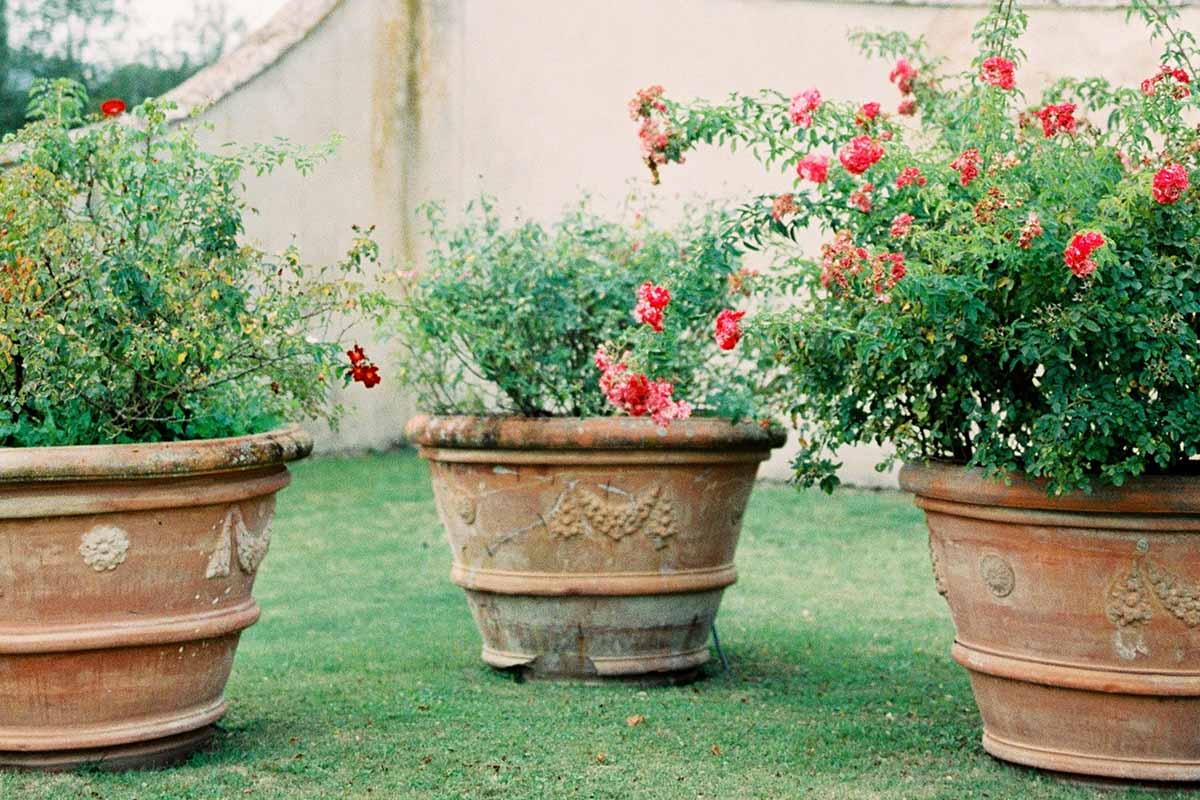
Plastic is too light for the larger varieties. Once a rose is in full bloom with lots of healthy branches, it can tip a plastic pot right over in a wind or rainstorm.
Better to choose something like concrete, glazed ceramic, or heavy fiberglass.
If you can place the container on a wheeled base, all the better. This is especially useful if you’re going to move the container during the winter.
Planting
Once you’re ready to plant your rose, fill the container partway with potting soil.
Skip anything that has slow-release fertilizer in it. Choose something with sphagnum moss in it, or work in some well-rotted compost.
I use FoxFarm Ocean Forest potting soil. It’s light and airy, with worm castings and fish meal to add nutrients that won’t burn the roots of the roses.
It’s also just the right pH for roses, which should be between 6.0 and 6.5.

FoxFarm Ocean Forest Potting Mix
If you’d like to pick up 12 quarts, visit Amazon.
Remove the plant from its nursery container and loosen up the roots. If you have a bare root, skip this step.
Fill in around the roots and bury the graft union (the little bump at the bottom of the main stem) if you purchased a grafted type.
Otherwise, plant as deep as it was in the original container or so the soil is just above where the stem meets the roots.
Water the soil well and add more if there’s any settling.
Care
Maintaining your container specimen is about the same as maintaining one in the ground. Check out our guide to growing roses to learn more.
Deadhead as necessary, following the tips in our guide. Not all plants need deadheading, but some do to encourage ample and repeated blooming.
You should also prune according to the type of rose you’re growing. We cover the details of that in our rose pruning guide.
You need to be a little more on top of watering with potted plants than you do with specimens grown in the ground because they tend to dry out more quickly. Water whenever the top inch of soil has dried out.
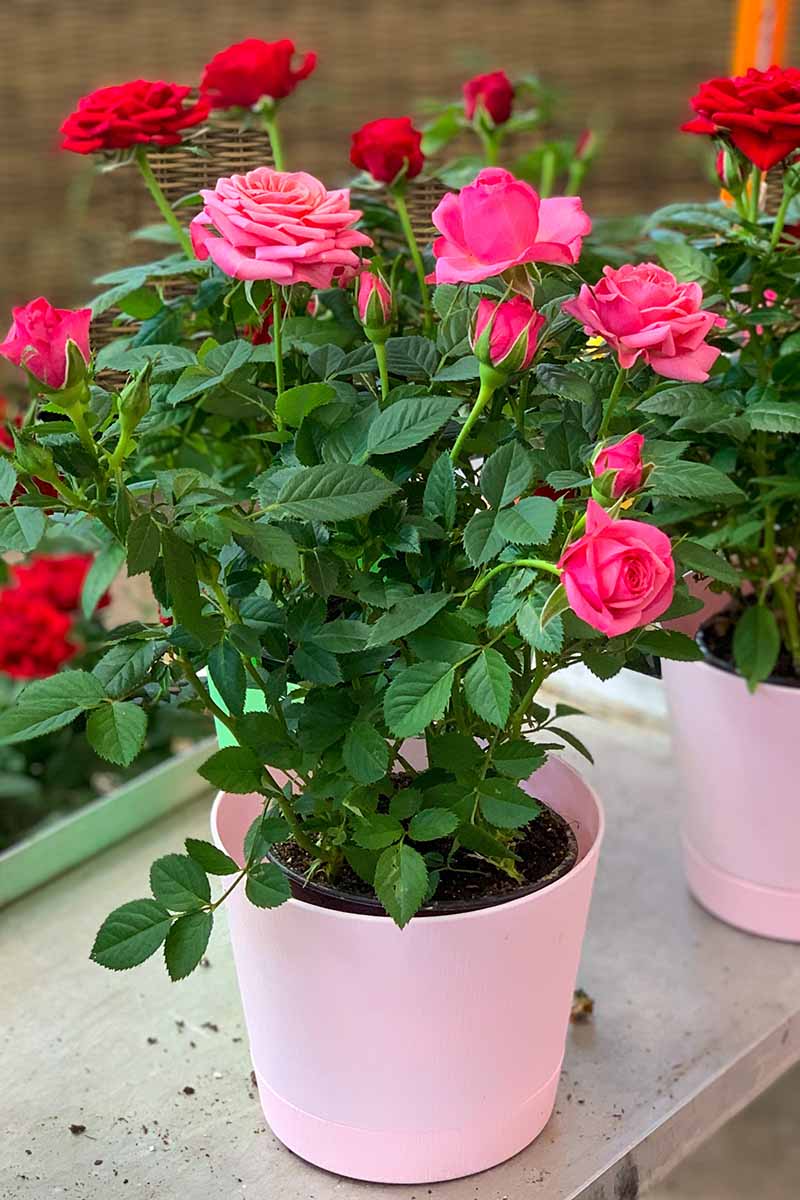
Your most challenging task is going to be repotting. This should be done in the spring before the leaves start budding out.
Young plants should be repotted every two years into a container one size up. After about five years, the plant should be mature and you can leave it in the same container. But that doesn’t mean your repotting tasks are done.
You still need to remove the plant and knock away as much soil as you can from the roots about every two years. Toss out all the soil in the pot. I like to recycle it as the base for raised beds, or I add an equal amount of well-rotted compost and use it to build up flower beds.
Place the plant back in the pot and refill around the roots with fresh potting soil.
If the plant was rootbound, with roots filling the container and circling the interior of the pot, or coming out of the drainage holes, prune the roots. You can cut them back by a third.
If it seems like your plant just isn’t blooming like it used to, it probably needs a larger pot – or even to go into the ground if you’ve already tried repotting up a size at least one or two times and the rose still isn’t thriving.
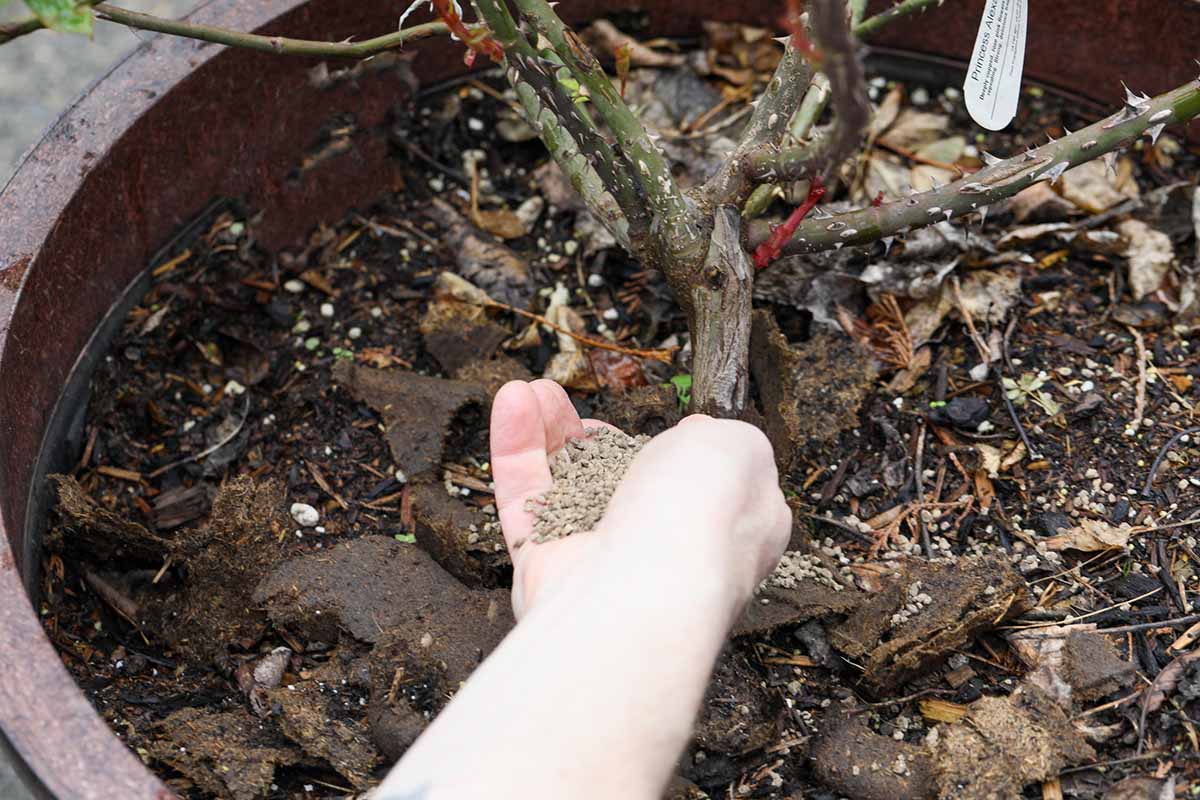
Fertilizing is pretty straightforward. As we mentioned, don’t use a slow-release granular fertilizer. In fact, it’s best to avoid granular fertilizers altogether, although I do use them occasionally.
These tend to burn the roots of potted roses. A mild, liquid fertilizer intended for flowering plants is just the thing.
AgroThrive makes a Fruit & Flower Fertilizer with an NPK ratio of 3-3-5, which is about right. You can purchase 32 ounces or a gallon of concentrate at Arbico Organics.
Mix it according to the manufacturer’s directions for mature plants. Apply it to the soil, not the leaves.
Regardless of which brand you opt to use, don’t apply any fertilizer in the first growing season.
Then, apply once a month from leaf bud until a month before the first predicted frost date in the fall.
Overwintering
Another of the benefits of growing roses in containers is that you can more easily protect them in the winter, assuming you have a small container or one on wheels.
Otherwise, round up your strongest friends to heft the sucker into a protected area, if necessary.
You don’t need to move potted roses unless you live in a USDA Hardiness Zone that’s too cold for your plant. How do you know? Check the hardiness range for your plant and imagine that you live in a place that’s one zone colder.
So, for example, if the plant is hardy down to Zone 6 and you live in Zone 7, you’re good to go.
But if you’re in Zone 6, it will be as if the plant is exposed to conditions like that of Zone 5 – too cold for our hypothetical plant.
In that case, you’ll want to move it somewhere protected, like a garage or shed. If you have a window the rose can be near, excellent. It’s not necessary, though.

The goal is to protect the plant from the freezing and thawing cycles that winter brings. If you can’t move the pot, wrap it in burlap or something similar.
Heck, feel free to do that regardless of whether it’s too cold for your plant or not! It’s always smart to protect a potted specimen from changing temperatures.
Whether you move your plant or not, prune it back to 18 to 24 inches above the soil. Heap about four inches of organic compost like wood chips, lawn clippings, or straw around the canes.
Water about half as often as you did during the summer, and don’t feed your rose at all.
You want the top three inches of soil to dry out between watering through the winter. Once the last predicted frost date has passed, return to your normal care routine.
Cultivars to Select
If you don’t want to have to think about selection too much, just pick a miniature rose. Any miniature will do well in a container.
Actually, most shrub types will do fine in a container as well, provided you have a large enough one available. Ramblers and wild roses, on the other hand, don’t do as well if they’re potted up.
Be My Baby
‘Be My Baby’ is a Weeks rose with a sweet and petite name, but it’s a vigorous grower with piles of pinkish-red flowers.
It reaches a respectable 24 inches tall and wide, and the flowers appear from mid-spring until the first frost.
Ready to bring home your new baby? Nature Hills Nursery carries it in a #2 container.
Carding Mill
I absolutely adore ‘Carding Mill,’ and I’d probably recommend it no matter what someone was looking for.
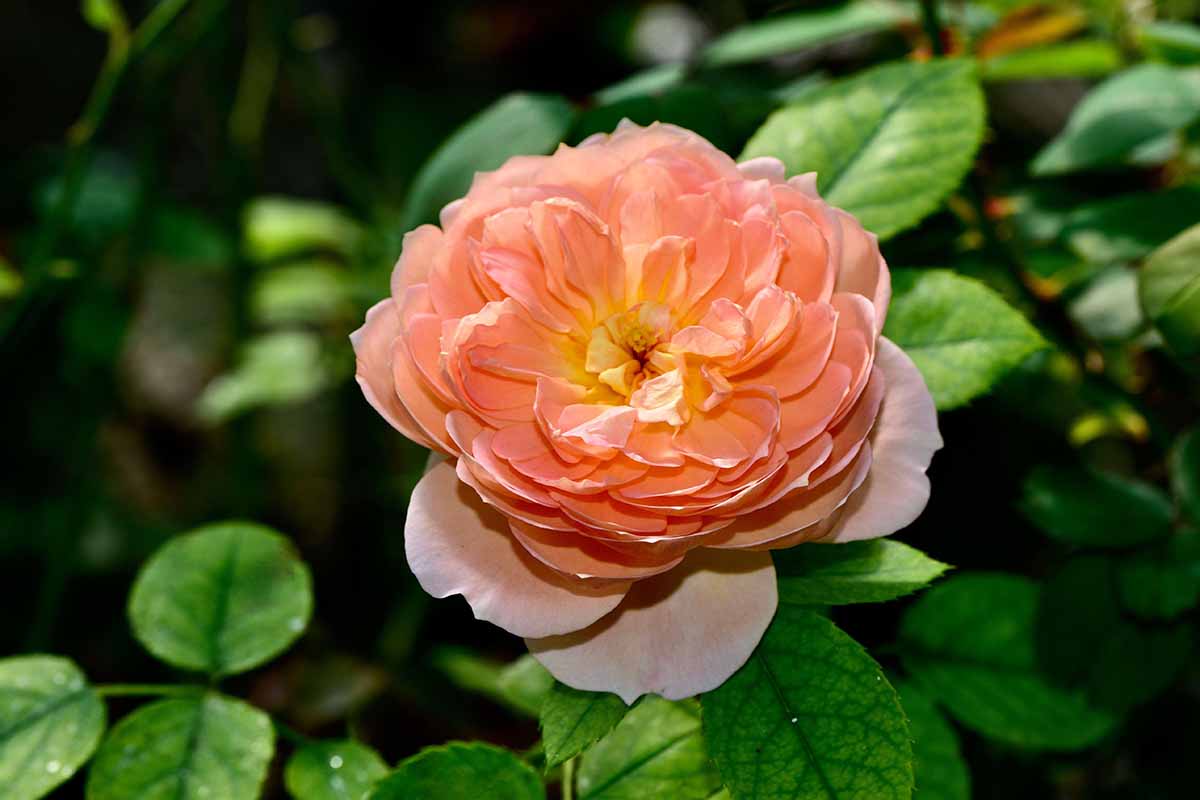
Need a nice hosta? Try ‘Carding Mill!’ Looking for the perfect microwave? ‘Carding Mill’ fits the bill!
In all seriousness, this David Austin rose is just out-of-this-world gorgeous.
The fully double apricot-orange blossoms start showing up in the spring and repeat throughout the summer and fall.
The blossoms have a heady myrrh fragrance, and they form at the end of stick-straight stems, which makes this cultivar perfect as a cutting flower.
Pick up a bare root from Burpee and bring ‘Carding Mill’ home to your neighborhood.
Double Knock Out
Knock Out roses are some of the most popular out there, but where a Knock Out is fantastic, the Double Knock Out is a… double knockout.
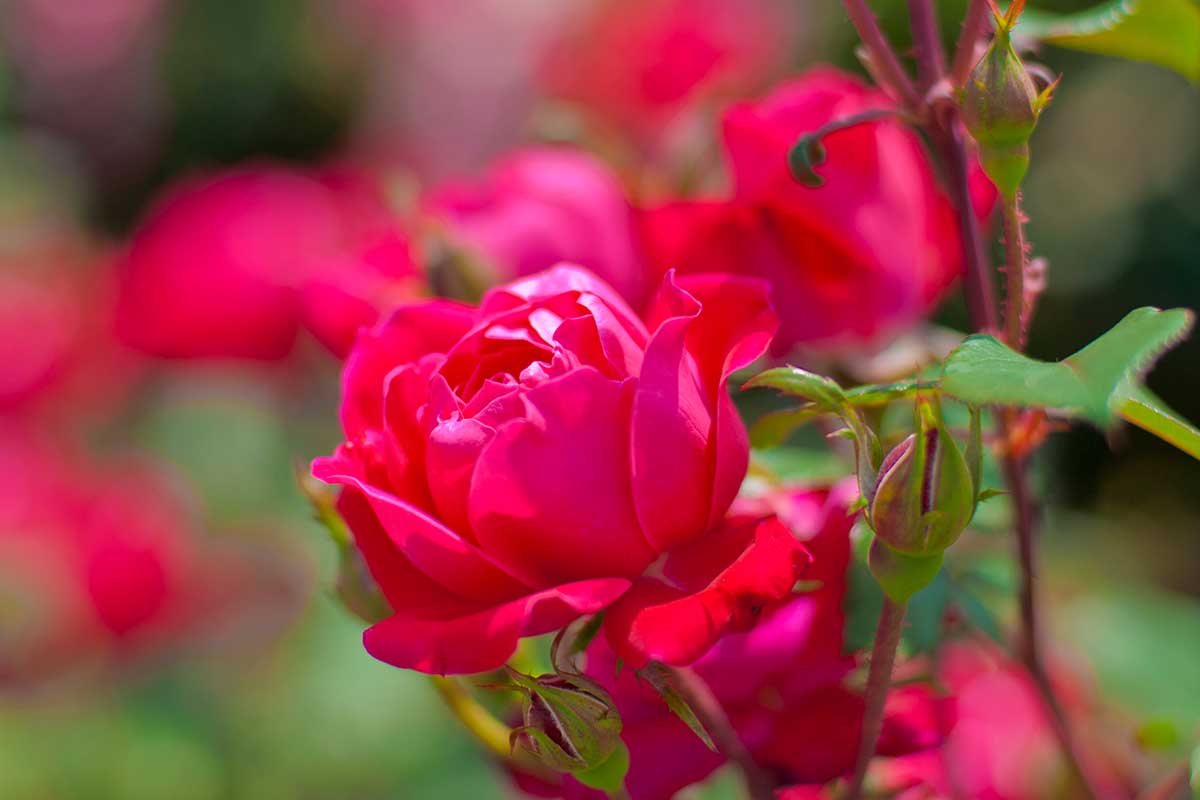
The biggest complaint I hear about the Knock Out series is that the flowers are a little small and simple.
The Double Knock Out has all the great disease resistance and resilience of the original series, but with frilly double flowers in bright cherry red.
Once fully mature, the shrub reaches 24 inches tall and wide.
Knock it out of the park by grabbing a bare root or #3 container from Nature Hills Nursery.
Earth Angel
Love peonies? And roses? They merge perfectly in Earth Angel™.
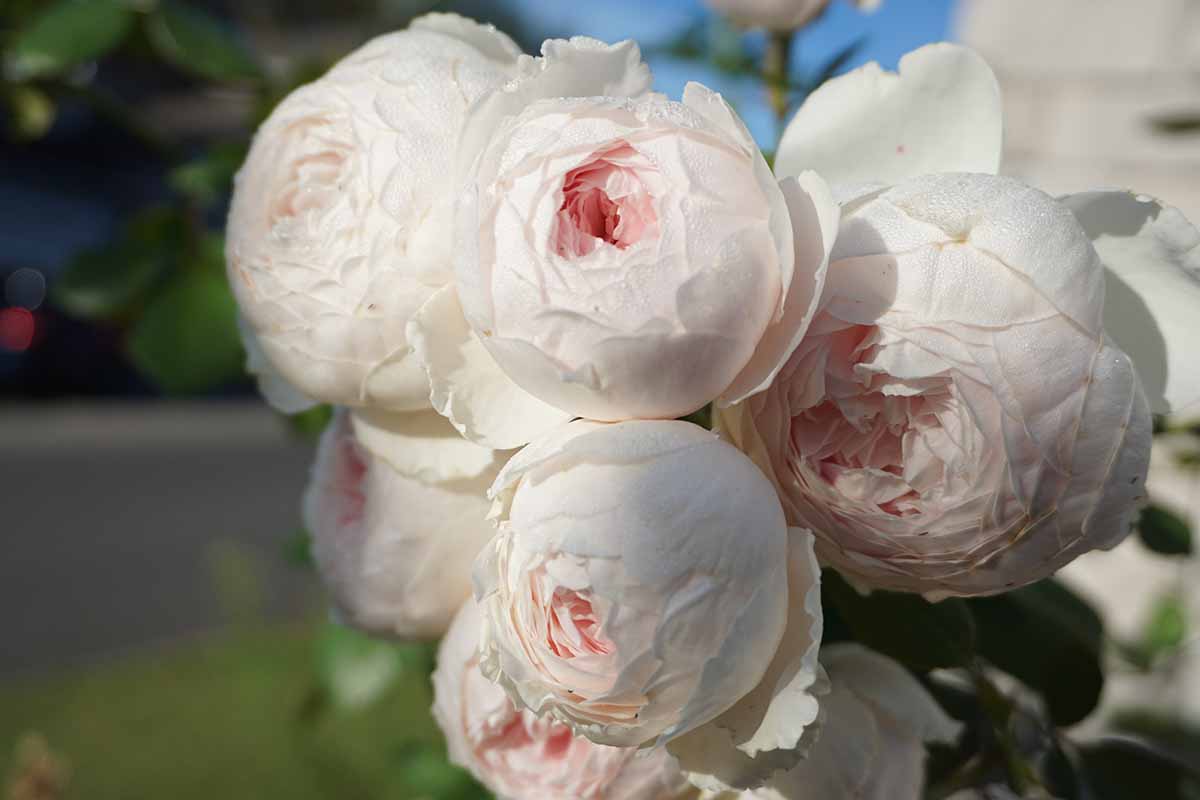
The fully double, cupped, pale pink blossoms look like peonies but smell like roses, and they last a heck of a lot longer than peonies do.
The mature plant can reach up to four feet tall and three feet wide, but it will stay more compact in a pot.
Earth Angel, will you be mine? Absolutely, if you head to Nature Hills Nursery for a live plant in a #3 container!
Lichfield Angel
‘Lichfield Angel’ is one of those roses that has moved with me from home to home. It’s a popular David Austin with coloring that is hard to describe. It has to be experienced.
The young flowers are peachy-pink with pale peach petals toward the outside of the blossoms. As the flowers mature, they fade to a buttery yellow and then turn nearly cream before dropping from the plant.
The outer petals are larger than the inner ones, and there are over 100 of them on each fully double flower.
Oh yeah, and the shrub is thornless, so if you put it in a container near a doorway, you don’t have to worry about being grabbed by overly-eager prickles.
This shrub grows a bit larger than some of the others on this list, capping off at about five by five feet.
Want one? Pick up a bare root at Burpee.
Poet’s Wife
The ‘Poet’s Wife’ is one of the prettiest yellow roses out there.
When they’re young, the fully double blossoms are bright, buttery yellow before fading to pale yellow over time. The petals are ruffled and have a strong, citrusy fragrance.

What marks these flowers as even more interesting is that the petals are evenly spaced and further apart on the outside, but more compact and random at the center.
This four-foot-tall and equally wide plant lives happily in containers and blooms on repeat all season long.
Burpee carries bare root plants if you’re itching to bring this one home.
Raspberry Cupcake
Ready for something sweet? How about a hybrid tea shrub that looks like someone placed pastries topped with piles of raspberry pink frosting on it?
The fully double flowers are incredibly fragrant with a citrusy floral scent.
Snag a reblooming plant in a #3 container from Nature Hills Nursery.
Sexy Rexy
The beautiful floribunda Sexy Rexy™ is just about the perfect classic pink rose.
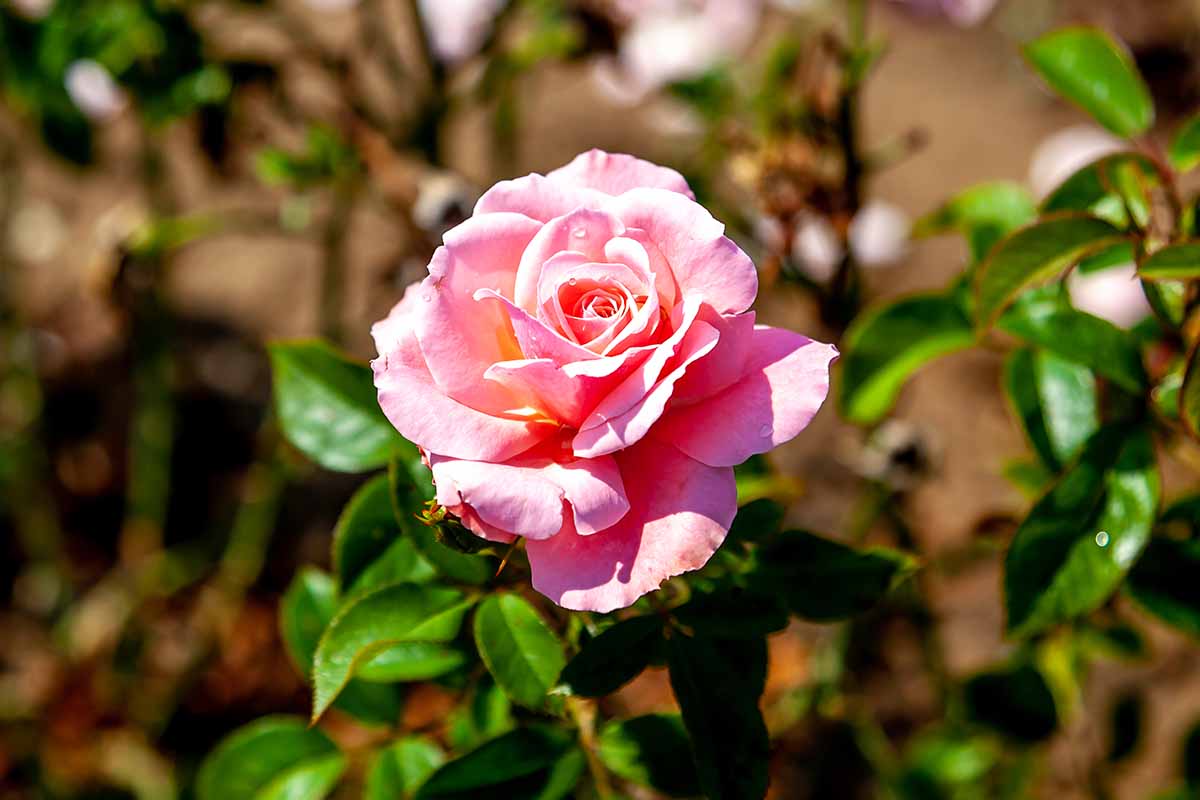
The fully double flowers form in big clusters of picture-perfect blossoms, and the shrub is extremely floriferous. At the peak of the season, the plant will be nearly completely covered in flowers.
But its dazzling display doesn’t come at the cost of the plant’s health. It’s extremely adaptable, disease-resistant, and robust.
The fact that it’s compact at three feet tall and two feet wide makes it perfect to fulfill your potted rose fantasies.
Its one failing is that it hardly has any scent at all. Oh well, it’s the flaws that make us interesting, right?
Make Sexy Rexy™ a part of your space by picking up a live plant in a #2 container at Nature Hills Nursery.
Sunblaze
Sunblaze® is a series of miniature roses from Meilland, and while they’re adorably petite at just 15 inches tall and wide, the display they put on is anything but.
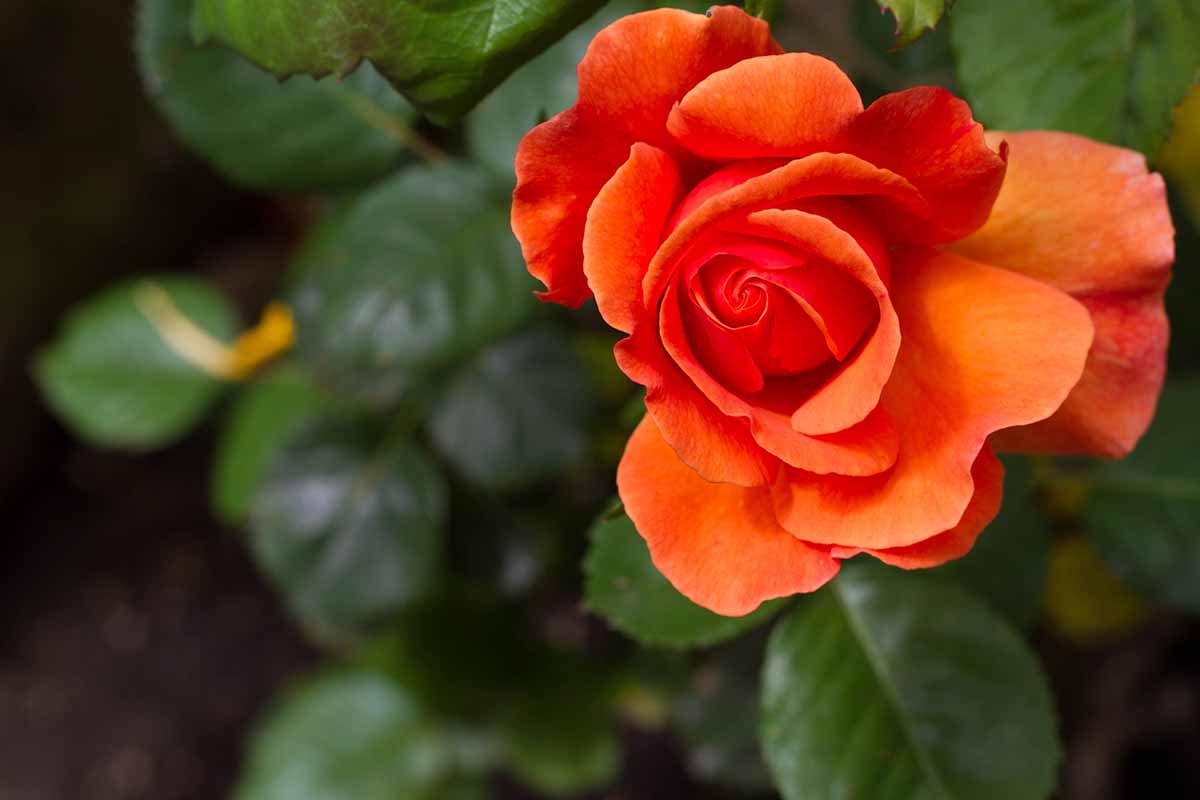
They’re extremely floriferous, with clusters of vibrant double blossoms.
The series includes a massive range of colors, from white and pale yellow to fuchsia and blood red.
I’m a fan of ‘Autumn.’ It’s a fiery red with hints of orange, like the most vivid fall foliage.
To pick up a plant in a #2 container, visit Nature Hills Nursery.
You can’t go wrong with the yellow version, either. The lemony petals of ‘Meiskaille’ are a ray of sunlight.
Once again, our friends at Nature Hills Nursery carry this one as a live plant in a #2 container.
Managing Pests and Disease
Container roses aren’t more susceptible to any of the usual rose diseases except for root rot, and that’s only true if the container doesn’t have sufficient drainage.
Root rot isn’t actually a disease but a physiological condition brought on by roots that are in sitting water and drowning. It’s sometimes exacerbated by advantageous waterborne pathogens.

When it comes to rose pests, all the common ones apply here, too. But I have found that aphids and spider mites seem to flock to potted roses more than those in the ground.
Maybe it’s the drier conditions or the fact that growing in a pot can be stressful when it isn’t done just right, but these opportunistic pests are ready and waiting to dive in.
You Can’t Contain These Roses
For a plant with such a fussy reputation, roses seem to thrive just fine in containers. As with most plants, with the right soil, water, and light exposure, they’ll be perfectly happy.
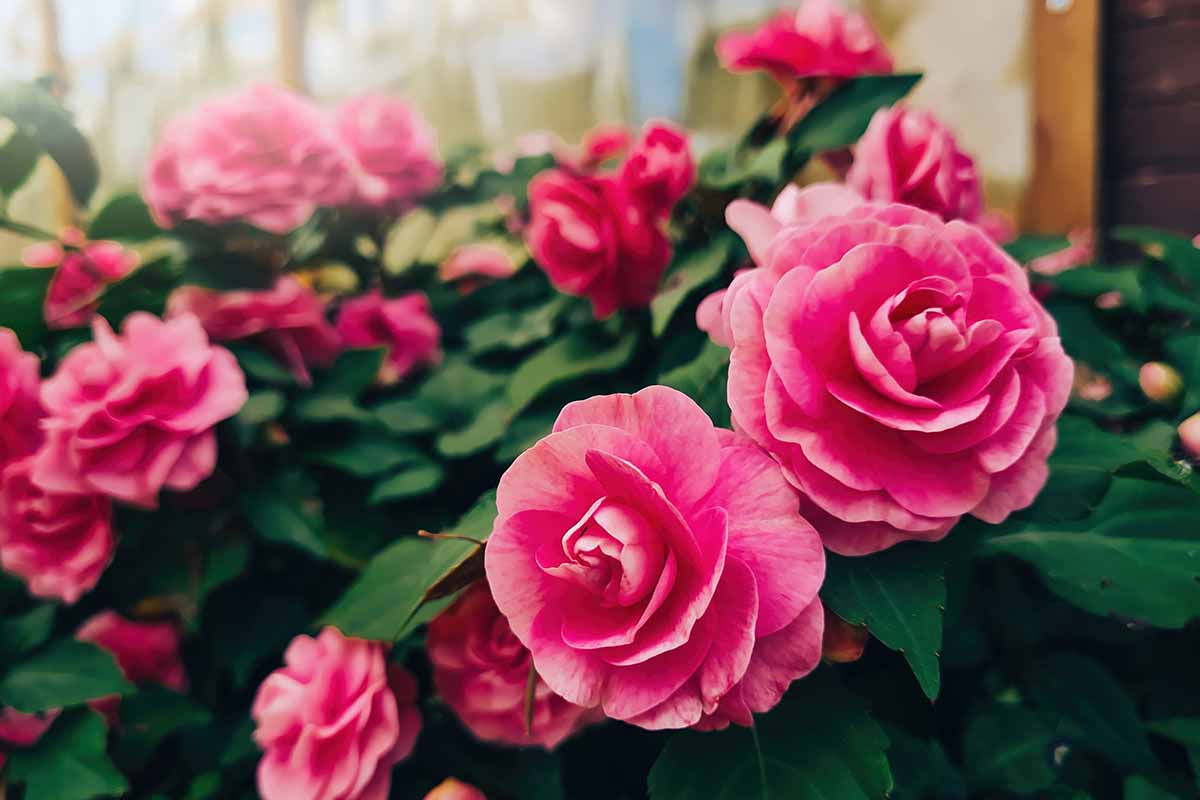
But it’s not just that they will tolerate life in a container. They’re undeniably eye-catching when potted up. Those big, colorful, often fragrant blossoms are highlighted even further by being grown in a pot.
Where will you place your plant? Are you looking to brighten up a patio? Add some height to a flower garden? Give us all the details in the comments.
Looking for some more rose-growing tips? If you found this guide helpful, we have several others that might be useful to you, including:
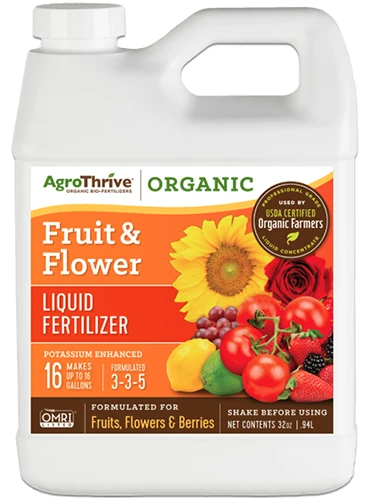
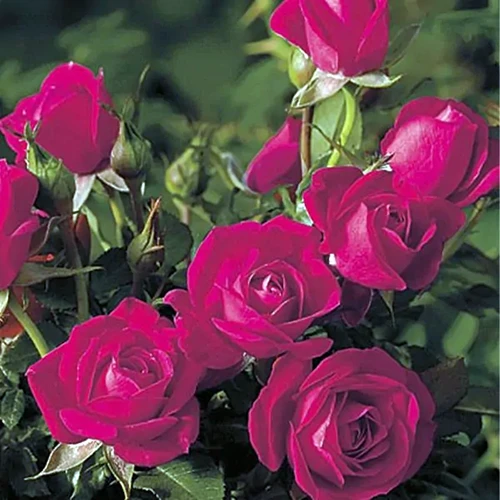
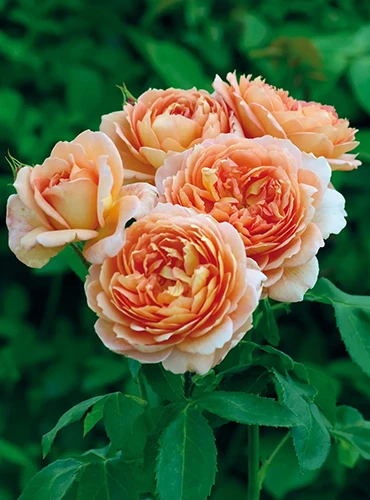
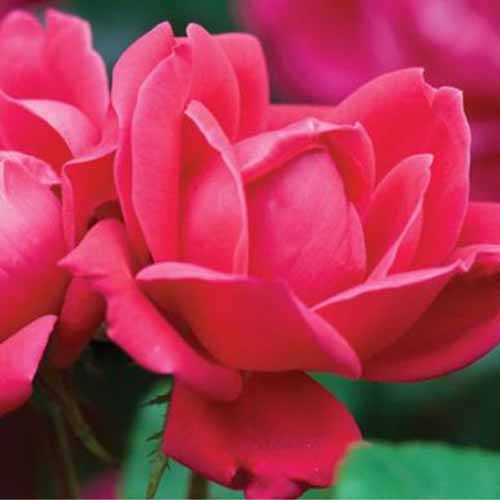
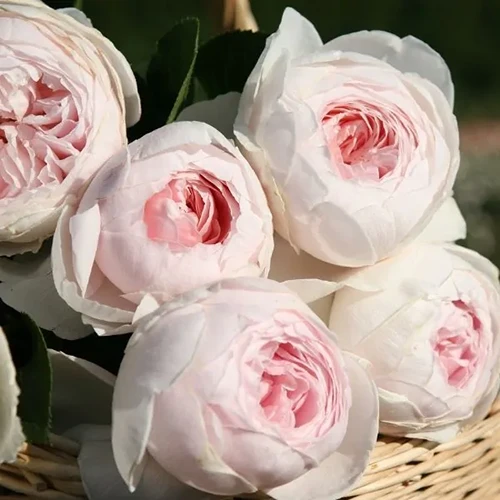
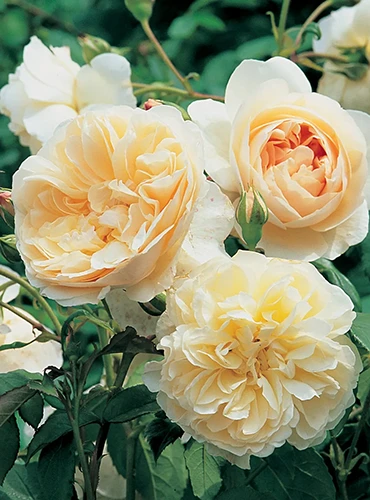
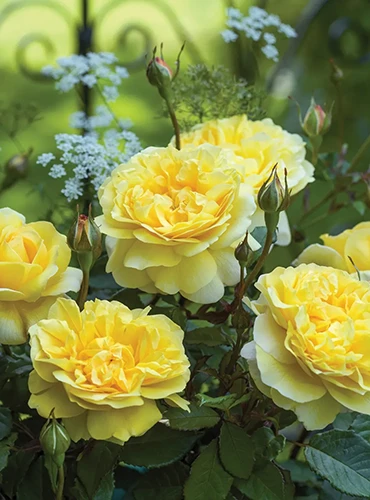
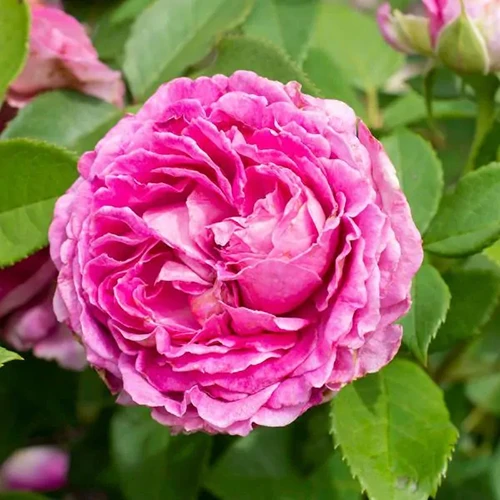
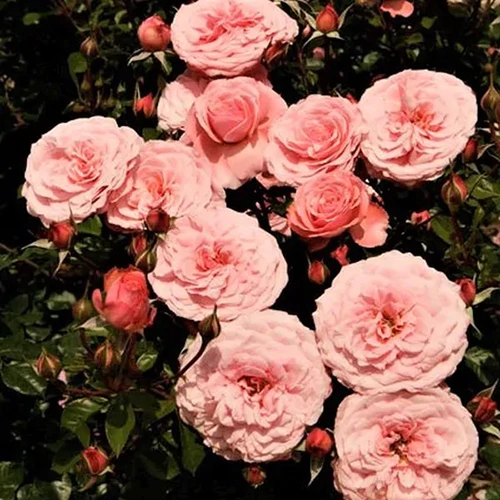

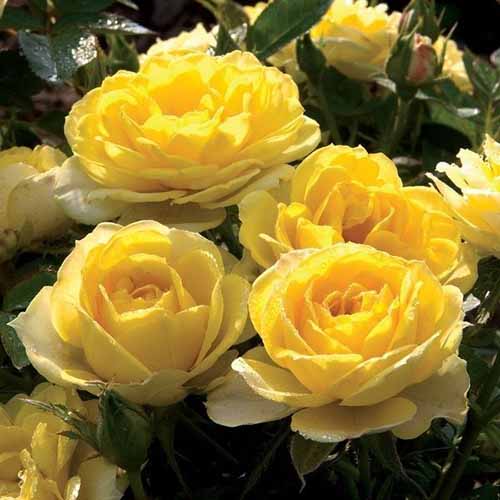
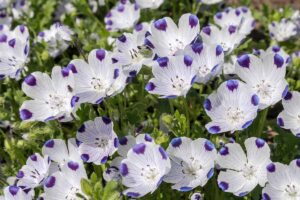

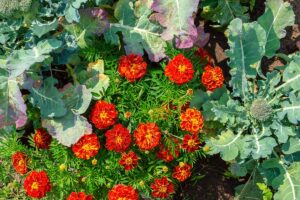
I hope I remember the names I liked best
Thank you for all that wonderful info. I do hope I will be able to remember all those wonderful names.